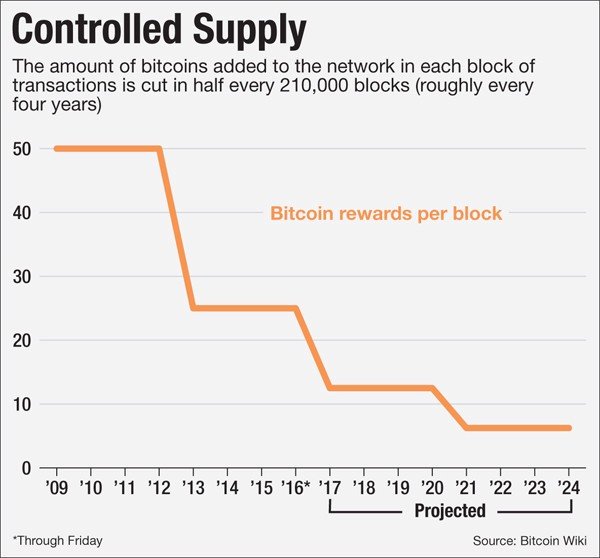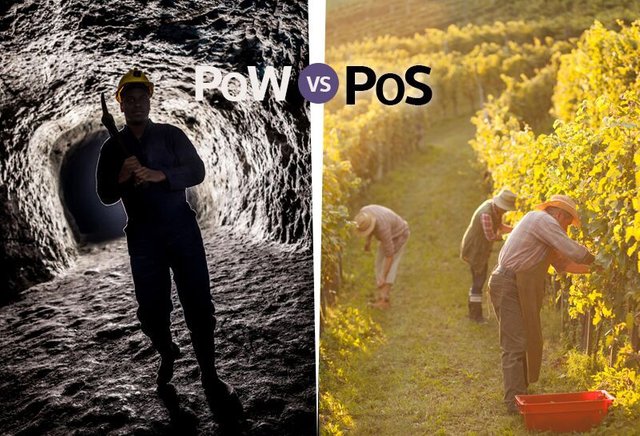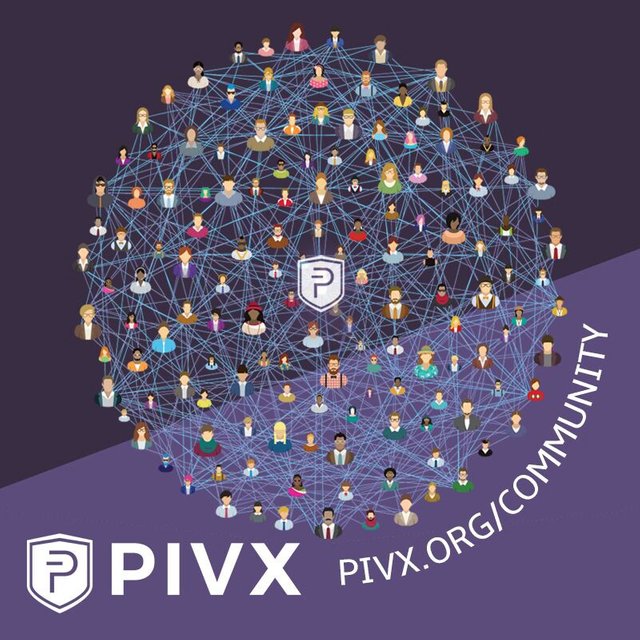Satoshi’s Incomplete Economic Vision
Looking at the current state of both Bitcoin and many of the altcoins made me recently wonder, what would Satoshi Nakamoto think of the current state of affairs? Specifically in the context of what he was trying to achieve with Bitcoin as a useable currency.

Before talking about that though, let’s look at the current state of affairs as how I see it.
1- Bitcoin is going along but it has not grown in strength as quickly as hoped in being a day-to-day currency that people find useful. At least the vast majority of people. Not sure what Satoshi’s expectation was here, so I’m more judging on what most Bitcoin adherents had hoped for about 2 or 3 years ago.
2- Bitcoin is the top cryptocurrency valued at $16 Billion.
3- Bitcoin’s percentage value relative to other cryptocurrencies is gradually falling over time
4- There are many cryptocurrencies vying to replace Bitcoin as an actual currency that people will use.
Since Satoshi wanted to replace Fiat currencies he was thinking of something of practical use without all of the problems associated with Fiat currencies. I don’t think though, that he thought Bitcoin should become a digital equivalent of Gold. At this point in time, however, Bitcoin does seem to lean more in that direction than as a day-to-day consumer level currency.
So what are the problems with trying to use Bitcoin as a day-to-day currency?
1- Transactions are slow to reach the needed amount of confirmations to be reliable
2- Zero-confirmation transactions are fast but could be double-spent
3- People see it more as speculative investment than a useful currency
4- Chicken and egg problem with regard to adoption
5- Technically challenging to understand and use for the average citizen
6- Mining is becoming centralized and is already out of the reach of most people or even businesses (mining doesn’t scale well)
While everything above can be solved and while some alternative cryptocurrencies are doing a better job than Bitcoin at some of those issues, I’m primarily interested in talking about 3 and 6 above
3 is a problem faced by all of the cryptocurrencies at the moment as far as I see it. Many early adopters don’t see that as a problem at all - as long as their investments are paying off for them.
However, we are concerned about Satoshi’s vision at this point, and so you may ask, why did that vision fail in bringing about a widely used currency?
Well, for me, one of the problems may have been Satoshi’s understanding of economics. This is not to say that Satoshi wasn’t a genius when it came to inventing the 1st real usable decentralized money system that has been exceedingly resilient to attacks and gained huge favor amongst it’s adherents. I’m just saying that as much as a great software architect and cryptographer that he was, his understanding of economics may not have been one of his greatest strengths.
The way I see it is that Satoshi saw many of the problems with Fiat currencies and wanted to avoid them. Perhaps the main problem he saw was an increasing money supply led to price inflation, which only seemed to benefit the bankers and the rich.
I say this because of his quote in the “genesis” block of Bitcoin
The Times 03/Jan/2009 Chancellor on brink of second bailout for banks 1
Given that, I think Satoshi wanted a currency with a limited supply, that is something closer to Gold than Fiat. For Austrian economists, Gold is seen not only as money but “sound” money. It should be noted that Gold doesn’t have a fixed supply since it is being continually mined, but that it’s supply grows very slowly — estimated at 1.5% annually according to this page (http://www.businessinsider.com/gold-supply-rising-faster-than-money-supply-2011-1)
It’s also interesting to note that the process of creating Bitcoins is also called mining although it bears little physical resemblance to Gold mining.
So, how does one create this limited supply digitally in such a way that it is fair and open to everyone to participate in? Satoshi’s hope was to allow the computers that most people owned do this, so that a truly decentralized currency could be created, that wouldn’t be dominantly owner by any small group. Also, the idea was to mine the currency over a limited time period giving advantages to the early adopters who were willing to spend their resources and risk putting money into holding Bitcoin.

Block Rewards
The way that Satoshi achieved this was to give a “block reward” to the miners in such a way that the reward would half approximately every four years. This is a quote from Satoshi’s whitepaper
“By convention, the first transaction in a block is a special transaction that starts a new coin owned by the creator of the block. This adds an incentive for nodes to support the network, and provides a way to initially distribute coins into circulation, since there is no central authority to issue them. The steady addition of a constant of amount of new coins is analogous to gold miners expending resources to add gold to circulation. In our case, it is CPU time and electricity that is expended.”
While that is all good, I don’t think Satoshi anticipated that in 2017, most of the mining would be done by a small number of powerful mining groups in limited areas of the world rather than being distributed evenly amongst adherents. This seems to be due perhaps to the unanticipated success of Bitcoin, since there is fierce competition to mine it because of the high rewards provided by ‘finding’ a new Bitcoin block.
Another problem I see is that the mining reward has very large step changes at discrete points in time. This drastically changes the dynamics of trading and the supply of new coins which in turn can cause the price to rise dramatically. As an analogy in our current economic system, imagine if banks only met ever 4 years to change interest rates and when they did so they either doubled or halved the interest rate.
A currency that is always increasing in value is not ideal. Some would say it is just as bad as one that always falls in value as it disproportionally favors the early holders and it will discourage people from using it at all if there are other alternatives available that don’t have that same property. At some point Bitcoin mining will completely cease — giving us a fixed supply. If that happened at a point in time where it’s distribution was considered “fair” by everyone, that may not be a problem. Now “fair” may be quite ambiguous to define, but I think I can safely say that most people won’t consider the distribution fair if it is mostly held by a small group of people (i.e. early adopters). The beauty of Bitcoin, however, is that it is open source. So once it gains worldwide approval as a viable currency it potentially could be cloned and restarted in a way that would lead to what is considered a fairer distribution for all.
Altcoins
Due to the popularity of Bitcoin, various clones of Bitcoin have been created. They usually change some parameters or add some form of innovation. However, because of more awareness of cryptocurrencies, these coins can perhaps be distributed more fairly than Bitcoin. Because Bitcoin was unknown, it was actually solo mined by Satoshi for at least 10 days before others joined in the process. New coins tend to have announcements ahead of time with a predefined schedule of when the currency will be launched so that anyone can partake of the process.
Even with that, however, not all coins are the same. Rather than having a pure mining approach, some coins “premine” set amounts that are set aside for the software developers or “core” team. And then there are others such as Dash which had what is now famously called an “instamine” (see here or just Google “dash instamine” for more details) whereby 2 million coins (or about 10% of the final supply) were mined in the 1st day.
Although these other methods are seen as unfair, they do address one problem. That is, how can the software continue to develop and be maintained by the development team if they are not getting paid. Obviously it is in the interest of people holding the currency that this happens too.
The solution to that problem, seems to be increasingly, to have a set amount of the currency being mined (or staked/minted — more on that later) set aside for developers and for building the infrastructure or ecosystem around the coin. Probably the most advantageous way of doing this is through a system usually called “Governance” that not only allows this but allows payments for other needs and can be adjusted at regular intervals.
Another side effect of this type of mechanism is that these new coins are paid out to developers and others that contribute to the network. These people will likely have to spend some of these coins to cover their own expenses. This in turn helps the distribution of these coins perhaps in a better way than mining does — spreading it out to the wider economy rather than in just buying more mining equipment. Also, it doesn’t require burning large amounts of electricity for no other productive use in the process.
So we have now reached a point where we can potentially have a fairer distribution (due to a wider audience) and also a self-sustainable system, but we have still not addressed the ‘halving’ problem. Before that though, let’s talk about an alternative to mined that is often referred to as ‘minting’

Graphic by Chad Ballantyne
Proof of Stake
The Proof-of-Stake concept was invented by Peercoin around 2012. Although it is beyond the scope of this article to talk about the technical merits of it, I will mention that it helps avoid some of the centralization issues associated with Bitcoin. However, we are primarily interested in it’s economic properties.
As far as I know, Peercoin wasn’t invented to address the economic weakness of Bitcoin (or other Proof-of-Work currencies), but as a consequence of it’s technical innovation, it is quite easy for a Proof-of-Stake currency to go beyond having a fixed supply for eternity. This is due to the fact that coins tend to be “minted” by ordinary users rather than mining conglomerates and thus it is “easy” in the sense that large mining resources are not required.
For proof-of-stake currencies, many users minting coins helps secure the network in a way akin to what Satoshi envisioned with Bitcoin. In turn for this effort, they are rewarded with a small amount of coins. Since the network will run continually in the foreseeable future, there will not be a limited amount of coins.
The consequences of this (ignoring the initial bootstrapping of the coin for now), is that there will not be these large discrete steps whereby the supply of new coins sees drastic changes. So there won’t be large dislocations in price as a consequence — which harms the ability of people seeing the coin as an actually currency.
Currently Proof-of-Stake coins seem to have two solutions to this issue. One is where the block reward is fixed — resulting in a decreasing inflation rate as the supply grows over time. The other is where the inflation rate is fixed at some small number such as approximately 1% in the case of Peercoin.
Although these are the two most common solutions, if we have a good governance system as part of the ecosystem, it is not inconceivable in the future for the public to be able to adjust the inflation rate in very small steps at regular intervals to deal with economic conditions — let’s say varying it between 1 and 0%. I won’t go into the reasons why that should be done at this point but that is something that could be done with governance if it would be beneficial

Effects of inflation
Fiat money and inflation revisited
At this point, many people will probably say — “But that’s exactly the problem with Fiat money”, i.e you have continual inflation that decreases the purchasing power of money and leads to several other problems.
To me, this idea comes more from a place of fear of inflation and replicating Fiat money, than a real understanding of inflation as it exists in cryptocurrency. Sometimes when building something new we become overly focused on avoiding previous problems than finding new solutions that can work.
First of all inflation in a cryptocurrency per se is not the same as in a nationally used currency (I spoke about this previously last year) — at least until the cryptocurrency gains widespread usage.
However, while skipping over those details, what is also different about inflation in a Proof-of-Stake currency, is that the “owners” of the currency are the ones who benefit from the inflation. That is, the inflationary coins are paid back directly to the coins owners in proportion to the amount of coins they hold — provided they are helping to secure the network in some way.
So in a future world where that coin is let’s say a national currency and prices are delimited in that coin, what would the effect of that inflation be? Well, I’d say it would be similar to the effect of inflation in our currently used currencies. That is, a bigger supply of money will drive prices up. So let’s say that over 1 year a 1% bigger money supply drives prices up by 1% (an ideal situation). Well, in the case of Proof-of-Stake minting, the owners of the coin will have earned 1% more coins. So if it costs them 1% more for goods they are no worse off than before because in turn they have 1% more coins.
When you look at it that way, then inflation is not really an issue nor is not have a fixed maximum supply of coins.
One more thing on inflation. Obviously price inflation is not really desired, but then again deflation is not ideal either. What is desired by most people is neither. Imagine stabile prices, especially for food and lodging! Well if Fiat is inherent inflationary and max supply cryptocurrencies are inherently deflationary, wouldn’t a small amount of coin inflation be good if it could be used to create a situation where prices are stable?
Conclusions
There have been many innovations since Satoshi invented bitcoin. Some of the highlights mentioned above are
1- Built-in Governance and Budget system to streamline development and maintenance of the coin
2- Avoidance of coin ecosystem becoming centralized through use of Proof-of-Stake minting over Proof-of-Work mining
3- Avoiding large steps in the liquid supply of new coins over time causing ever increasing prices and dislocations
4- Having a small amount of inflation that helps redistribute new coins while not penalizing people who help secure the network in any way.
Given these innovations, you may ask, well which currencies have these properties?
For me, these is one contender that I really like. It is PIVX. It started as a clone of Dash so it has inherited various innovations there such as governance, instant transactions and privacy. However, because it has transitioned from Proof-of-Work to Proof-of-Stake, it now also has all of the benefits of that system. In addition, it is a community centric coin (which is not to be understated in my opinion), that will transition to having even better privacy than Dash (through zerocoin protocol) and even better governance through its being more directly connected to the community.

Graphic by Chad Ballantyne
You can find out more about Pivx here, join the slack or forum to discuss these points more and help us in our journey to make Pivx a useful currency that benefits the community that uses it.
Thank you for this. I have been enjoying the PIVX ride for a month now. Shame to see so many people cash out when it hit $1 a few days ago. Personally I'm not pulling out yet :)
We're just getting started, but this is crypto so it'll be a bumpy ride!
why we haven't seen yet #pivx on #poloniex?